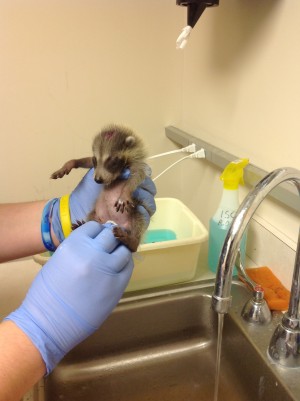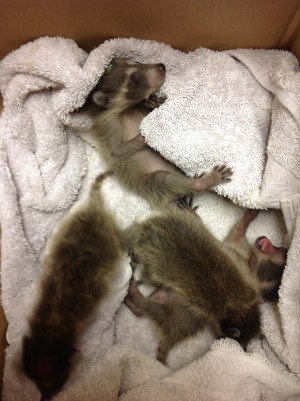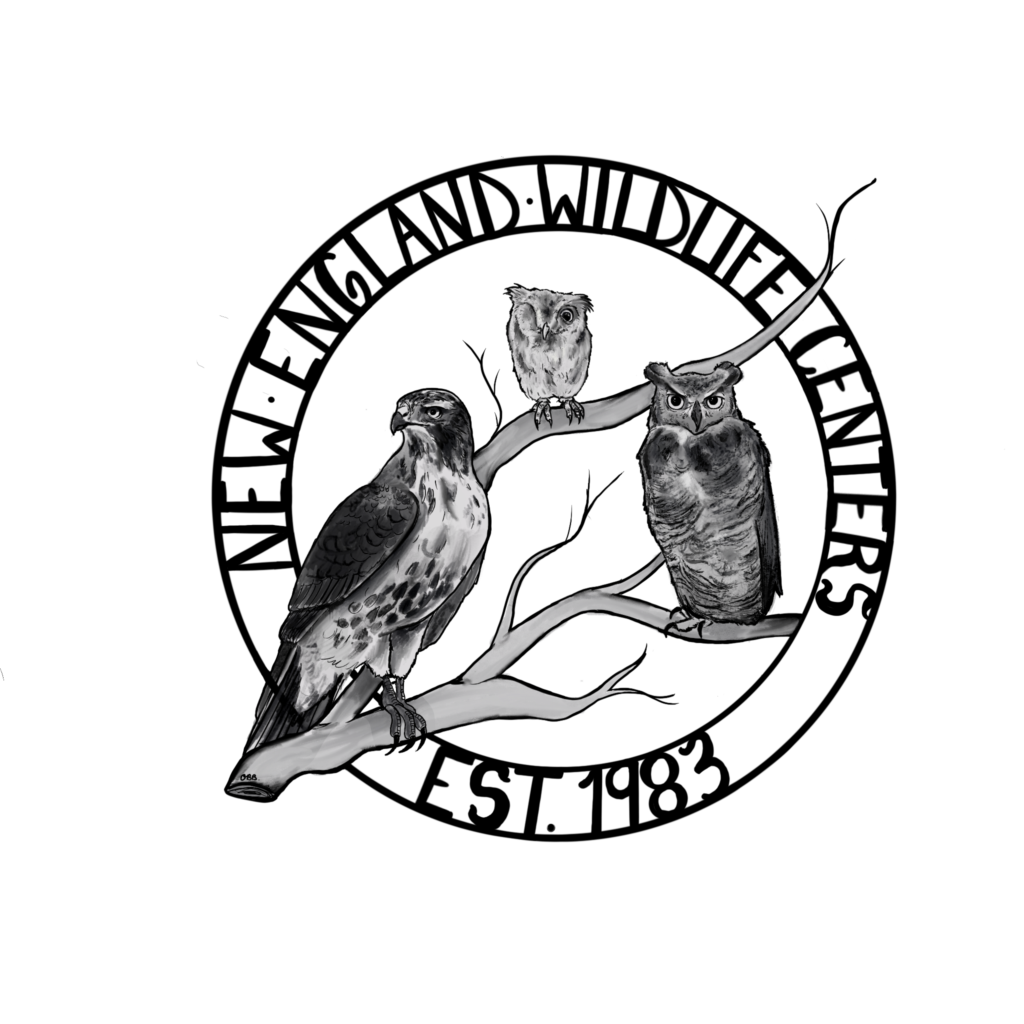Raccoons are wonderful, intelligent, and adaptable animals. Here at New England Wildlife Center we have adopted them as our animal mascot, because we believe that they symbolize many of the characteristics we strive to embody. They are curious, hands-on animals that are constantly exploring their environment to learn more about it. They are creative and adaptable, able to eat pretty much anything they find in order to survive, as well as being able to live in almost every type of habitat imaginable. They exist in swamps, cities, forests, marshes, and many other ecosystems in between. We treat quite a lot of raccoons every year, and the majority of them come to us as small babies.
When treating a baby raccoon, there are four very important things to keep in mind. The first is the frequency that they need to be fed. We start by feeding babies as much as 8 times a day if they are very young, and feeding at regular intervals is very important for their digestion.
The second is hydration levels. Baby animals need to be kept around a certain level of hydration, which is usually taken care of due to the fact that the formula we feed them contains a large percentage of water. What is often a problem is too much hydration. Babies can get diarrhea easily, and feeding too often with too much water is one of the easiest ways to give them loose stool. A balance needs to be struck between over and under hydration.
The third thing to keep in mind is the need for genital stimulation when their eyes are closed. In the wild, their mothers lick their genital area in order to stimulate the babies to urinate and defecate. We need to wipe the area with a warm wet cloth after every feeding, or their waste builds up in their intestines and can lead to some nasty problems.
Finally, it is very important to keep the babies warm. Young animals have very little tolerance for the cold, and succumb to hypothermia much more easily than adults. The cold can also hurt the function of their immune and digestive systems. We keep heating pads under our baby raccoon cages at all times until they reach a more adolescent stage. Like hydration however, it is important to remember balance. The heating pad is always set on low and we keep an area of the cage off the pad so that the babies can self-regulate their temperature by moving to that area if they get too hot for some reason.
Soon enough these babies, like those we have raised in the past, will be living on their own in our large outdoor enclosure and be ready for release. For now however, we will care for them diligently and make sure that every aspect of their health is taken care of. We do love wild raccoons!



